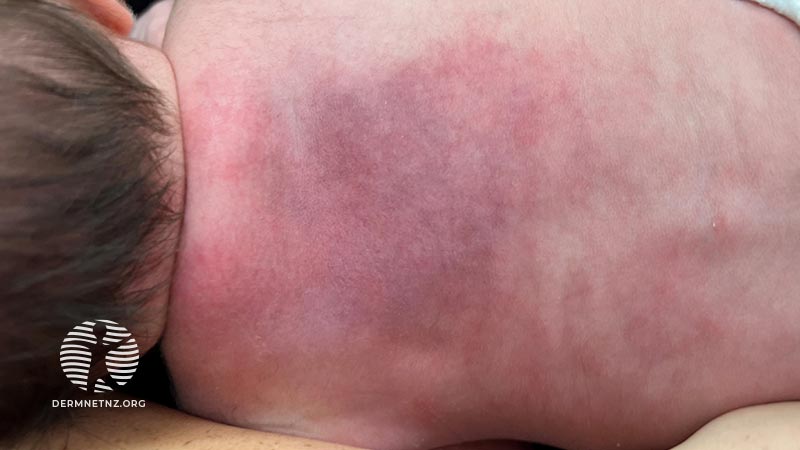Main menu
Common skin conditions

NEWS
Join DermNet PRO
Read more
Quick links
Firm red plaques on the back of a neonate
Last reviewed: May 2023
Author(s): Dr Stanley Leong, Dermatology and Paediatric Registrar, Christchurch (May 2023) Reviewing dermatologist: Dr Ian Coulson (2023)
Edited by DermNet content department

Background
A 12-day-old neonate presents with a large thickened area of skin discoloration on the back.
On examination, there were large, indurated, red-brown violaceous plaques with multiple discrete lumps on the back.
What is it?
Subcutaneous fat necrosis of the newborn. This is an uncommon panniculitis of neonates. It usually occurs in the first days of life. There has often been fetal distress in labour and it may be associated with therapeutic hypothermia for hypoxic ischaemic encephalopathy. It can be painful. It usually, ultimately, self-resolves.
What complications may arise?
It is associated with symptomatic hypercalcemia (irritability, constipation, poor weight gain, and arrhythmia) as frequently as in 50% of cases. A baby with subcutaneous fat necrosis should have their blood calcium checked periodically for the first few months of life.
Hypercalcaemia can be treated with low calcium milk feeds, increasing fluid intake, frusemide, or bisphosphonates.
What are some differential diagnoses?
Sclerema neonatorum is an extremely rare disorder which was described in premature or debilitated children who developed a diffuse board-like stiffness due to generalized fat necrosis.
This condition usually appears in the first days after birth and is usually fatal.
